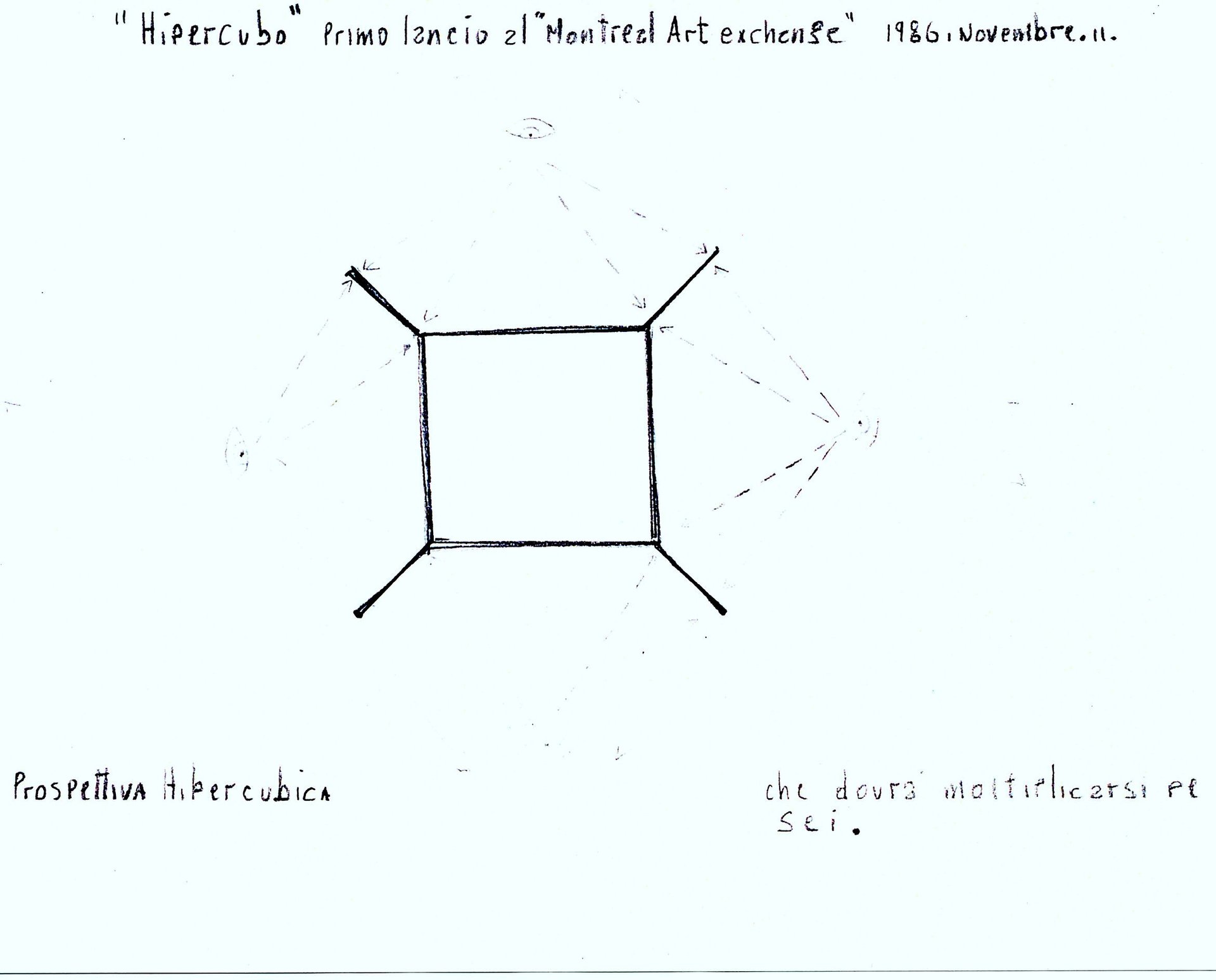
The Art That Surpasses Bidimensionality and Redefines the Perception of Space.
In the contemporary art scene, Hypercubism emerges as a movement that challenges traditional visual conventions, pushing beyond simple bidimensional narration to explore new dimensions of perception and space. This current, rooted in modern science and advanced geometric theories, stands out for its innovative use of perspective and a vision that integrates concepts from physics and mathematics with pictorial art.
One of the central elements of Hypercubism is the tesseract, or hypercube, a four-dimensional geometric figure that allows for a more complex and complete representation of reality compared to classic three-dimensional perspective. The artist does not merely depict the visible surface of objects but seeks to explore their internal and external structures simultaneously, breaking the barriers of conventional perception.
When Oliva was a child, he showed the restlessness and curiosity to have in painting a vision of the subject from all sides. At the age of 14, in 1967, he imagined using the cube as a support to overcome the perspective of flat painting. After studying the geometry of the fourth-dimensional cube and understanding that its shadow would be the hypercube or tesseract, he was able to transfer his theory onto this volume, finding an innovative way to represent reality more completely and immersively.
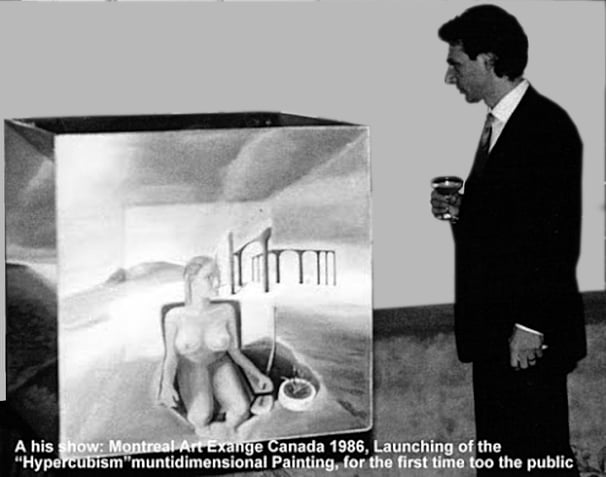

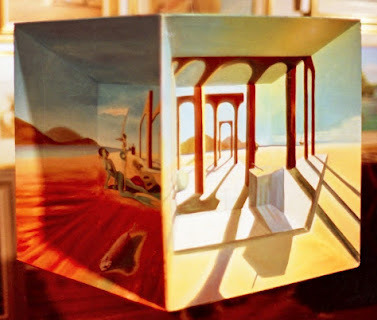

Hypercubist Perspective and Its Visual Innovation
A striking example of this perspective revolution is Oliva’s work, which applies the optical illusion of perspective not on a bidimensional plane but on a three-dimensional object. In this way, every side and plane of the hypercube is represented simultaneously, creating a multi-perspective vision that surpasses the limits of traditional painting without necessarily crossing into sculpture.
This technique not only expands the observer’s visual perception but also suggests the existence of an additional dimension beyond human sensory perception. The overcoming of Cartesian and Euclidean geometry thus translates into a visual experience that brings art closer to a deeper understanding of both physical and conceptual reality.
Hypercubism was first launched in a solo exhibition by Oliva in Montreal at the "Montreal Art Exchange" in 1986. It was later presented in Italy in a solo exhibition at the Teatro Comunale di San Felice del Circeo. To this day, only Oliva has practiced Hypercubism, and to his knowledge, no other artists have followed this movement.
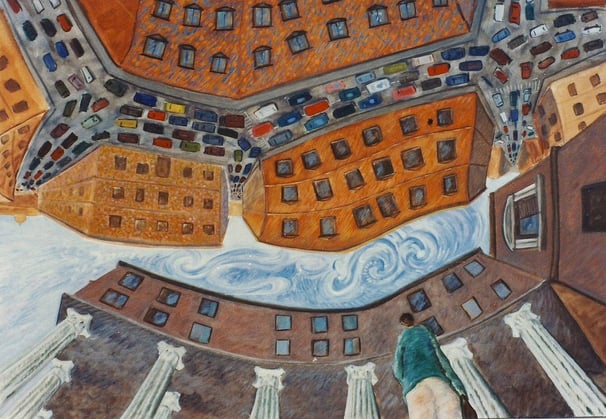

Art and Science: A Revolutionary Union.
Hypercubism develops in an era where scientific discoveries have redefined our understanding of reality. Research on Einsteinian relativity and the end of classical Euclidean geometry has inspired artists to reconsider how space is represented. The traditional perspective, based on fixed viewpoints and linear specializations, is abandoned in favor of a fluid and multidimensional conception of space.
Beyond Cubism: Differences and Influences
While Picasso and Braque’s Cubism focused on decomposing the object to narrate it from multiple viewpoints, Hypercubism goes further: it does not merely represent a subject from different angles but aims to discover the true structure of space itself. Oliva, in particular, subverts the traditional perception of space through the concept of "space folding," suggesting that reality may have an unknown form beyond the limits of our sensory perception.
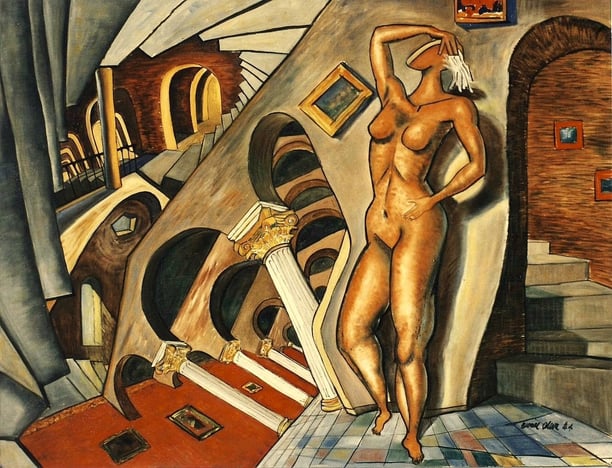

Service title
Beyond its technical and perspective revolution, Hypercubism carries a strong philosophical and social message. In an era characterized by the fragmentation of knowledge and the tendency to focus on isolated aspects of reality, Hypercubism proposes an integral and universal vision. The goal is to overcome particularisms and divisions, restoring to the observer a unified perception of space and the world around us.
This perspective takes on an almost political value, opposing the resurgence of nationalism and localism that fragment humanity’s understanding. In Hypercubist painting, one can thus see a form of neo-humanism, where the geometric-spatial complexity becomes a metaphor for the necessity of a broader and more inclusive vision of society.
Conclusion
Hypercubism is not just a pictorial innovation but a true manifesto for a new way of understanding reality and art. Through the use of the tesseract and the fourth dimension, Hypercubist artists offer a broader and more complete perspective, capable of surpassing the limits imposed by sensory perception and traditional artistic conventions.
In an age where the fragmentation of knowledge and cultures risks limiting our worldview, Hypercubism presents itself as a bridge toward a deeper and more universal understanding of reality. An artistic and intellectual challenge that continues to stimulate debate on how we perceive and represent the space around us.
[References and Publications : Filippo Salvatore, PhD, "The Canadian Citizen", Montréal, Tra Rinascimento e quarta dimensione, 26 novembre 1986; Ironica estraneità tra donna linfa e uomini cane, 1994; Dorothy Roatz Myers, "About Art", Soho, New York, 1993; Italie Italia Italy – La rivista per gli italiani nel mondo, Anno 1, N. 1, agosto 1996, pp. 43-45. Pietro Morelli Jr., "L’arte di riflettere".]
Explore
ARTBASE & CESARE OLIVA MUSEUM
© 2024. All rights reserved. ARTBASE & CESARE OLIVA MUSEUM
